Spiritual Guidance: Our own class fantasy
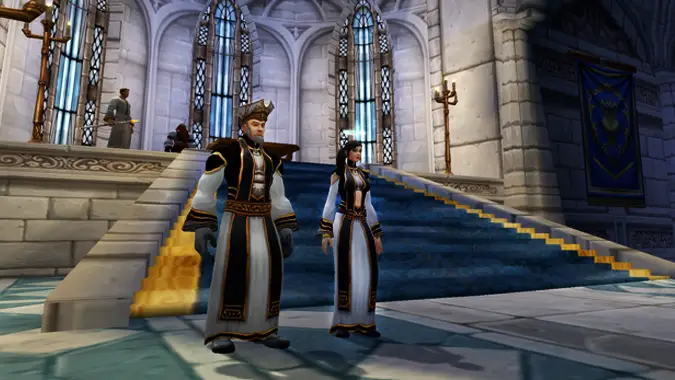
BlizzCon soon approaches, and with it Legion‘s promise to go back to the fantasy of each class. Priests are unique because their class fantasy derives from their individual races, rather than the class itself. As I spoke previously regarding Class Halls, the Priest class changes depending on the race. In lore, Priests aren’t the same across the races, unlike a lot of the other classes. The racial Priest organizations have evolved separately, and the fact that they are all called Priests is largely for gameplay reasons. They worship different deities, draw their power from different sources. They don’t have a singular identity, but what they do have in common is a purpose. The good thing about this is that we have a lot of lore in place to provide a very rich class fantasy.
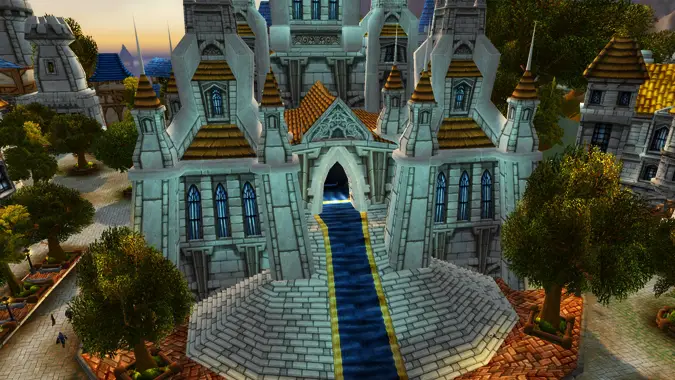
What we’re working with
To understand our class fantasy, we first have to know the basis for each race’s version of what they call Priests. For the majority of the Alliance, the benevolent Light is the dominant power and most commonly worshiped. Humans originally discovered the power known as the Light while they were still a young race, and they passed it on to the Dwarves and High Elves. The Humans founded the Church of the Holy Light, a deeply spiritual and philosophical organization set on maintaining honor and goodness. Dwarves soon followed suit joining the Church, and their relationship with the Light is very similar to that of Humans. Gnomes are likewise affiliated with the Light and the Church, through their ties to the Humans and Dwarves, but they tend to take a more medical and technological approach rather than a spiritual one.
Worgen are very similar to the Humans of Stormwind and Lordaeron with regards to their worship of the Light and involvement in the Church. While Gilneas tended to have nature magic in general, those with the affinity for it would likely have accepted the Night Elves’ gift of druidism. Worgen who were Priests would have found comfort in returning to the teachings of the Light once they were released from their feral nature. Draenei are also worshipers of the Light, though they differ from the type of relationship the Azerothian races have. Draenei were introduced to the power of the Light through the Naaru, and it is a central part of their culture. Where Azerothian races were introduced to the Light through the Church, the Draenei are directly tied to the Light through the Naaru and they are deeply pious, owing their lives to the Naaru’s help in escaping the Burning Legion.
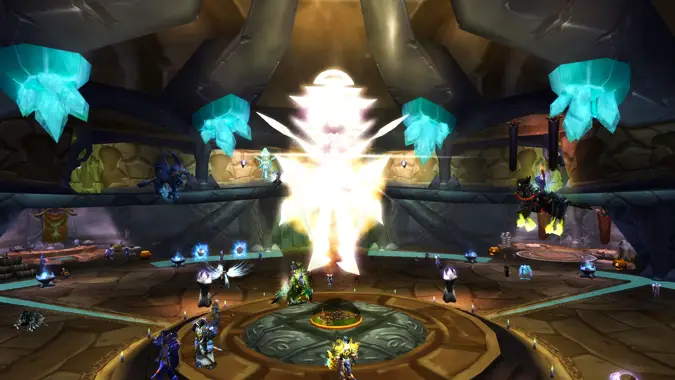
The Night Elves are the only Alliance race to not worship or derive their power from the Light. Their version of priesthood existed far before any contact with the other alliance races, and therefore evolved separately. The Night Elves worship Elune and their power comes directly from her. Their priesthood, the Sisterhood of Elune, is a religious and political order formerly exclusive to women and entrenched within their society in official leadership and government positions.
The Horde, on the other hand, varies quite a bit with less Light focus and more on other magics. Two races of the Horde are former Alliance, and so have ties to that Light-based power. The Blood Elves were introduced to the Light through their Human allies when they were still High Elves, and so had connections to the Church of the Light, though their power was a combination of the Light and the Sunwell, or the Light through the Sunwell. When Arthas caused the fall of Silvermoon and the elves took the name Sin’dorei, many Blood Elves lost faith in the Light for deserting them during their greatest need. With the Sunwell destroyed, they instead turned to less savory magic and methods to survive. The restoration of the Sunwell has helped heal most of these elves, but not all, and there are still some who haven’t made peace with the Light. After the business of the Blood Knights and M’uru in Silvermoon, some Blood Elves may still believe the Light to be a tool to be used rather than a respected power.
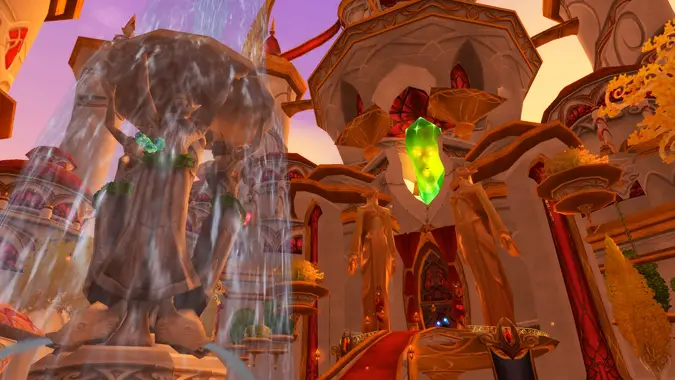
The Forsaken also have ties to the Light through their former lives as Humans, but if we were to go solely by lore, they would likely have few or no healing Priests. Their connection to the Light was largely severed by undeath, and the Light burns when they try to use it, or painfully cauterizes if they are healed by it. Their answer to this loss is the Cult of the Forgotten Shadow. However, Light and Shadow are always in balance and one cannot exist without the other. Those who do heal would have to have wills of iron in order to withstand the constant torture. Trolls have a distinctly separate ideology and priesthood, pulling their power from the voodoo magic and Loa that they worship. They are more spiritual guides and witch doctors of their tribes than a cleric, though they fulfill the same role since Priests are all about the spiritual convictions. Like the Forsaken, Trolls tend to be more shadow magic rather than Light or healing.
Tauren are relatively new to the priesthood and their power comes from An’she the Sun, similar to the relationship the Night Elves have with the moon. The Tauren believe it provides a balance to druidism and the worship of Mu’sha the moon (Elune), which completes both eyes of the Earth Mother. Goblins worship the only thing they find value in: Currency. They are able to wield a form of the Light, but it is particularly driven by greed. Since the Light does not discriminate, it may allow Goblins to use its powers to achieve the greater good, despite any personal beliefs of its wielder.
The one neutral race, Pandaren, have not had their priest origins addressed or confirmed in lore, though they mention the Light here and there in quotes by NPCs. Given their reverence for the four Pandaren deities and the legendary cloak, they may relate to Chi-ji.
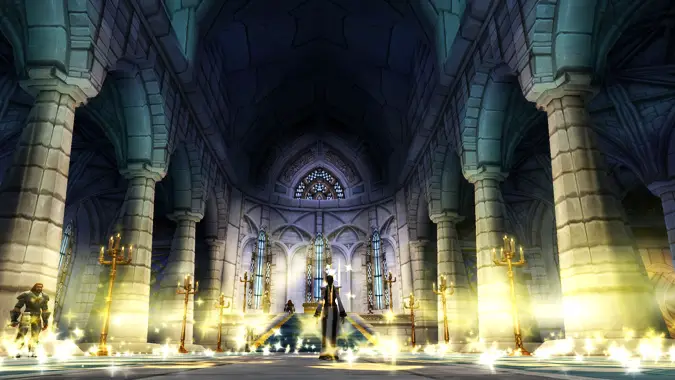
The fantasy of the specs
Separate from the racial identities of the class, we also have individual spec identities. Holy and Discipline achieve the same goals (healing allies), but in different ways. In gameplay, Holy is the more traditional healer, purely reactive in mending wounds, while Discipline is more proactive, preventing damage in the first place. Prior to Warlords of Draenor, Priests shared a lot of the same spells across each spec, but these were removed to add distinction and make them feel unique. Legion will bring even more changes, but I’ll talk about how I view them currently.
Holy tends to be more nurturing and caring. They heal their allies with the Light, wielding it from outside themselves to flow into wounds. Taking a look at spell names, we can see a deeply comforting healer. Divine Hymn boosts their allies through faith. Guardian Spirit protects those who are in greatest need, sacrificing itself if death calls early. Renew refreshes their health, and Sanctuary and Serenity, Holy’s two main chakras, provide a safe place of calmness. Spirit of Redemption still protects those allies even from beyond the grave.
Discipline seems to be a sort of harsher mercy. If Holy was your mother, comforting and caring for your 5-year-old self in bed with the sniffles, Discipline is your older sister telling you to get over it. It protects, but causes pain as well, and heals through pain. Have you ever watched Penance being cast on someone? It physically jolts them. While Holy will summon a literal angel to protect those in danger of dying, Discipline offers pain management. Discipline heals through tight control over the mind and body, their will is focused and clear, they are righteous and unyielding. In a way, Discipline is almost directly the opposite of Shadow, that ever constant balance of Light and Dark. Shadow weakens the enemy through the mind and Discipline strengthens allies the same way. Shields can protect the body but also take a toll on the soul.
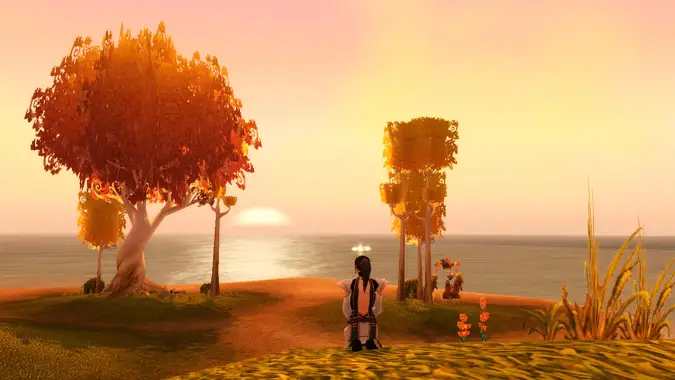
What the future holds
We’ve already heard a few plans for changes to Discipline, making it more of a hybrid healer and damage dealer than before. Absorbs are very powerful, and though I like the unique flavor it gives Discipline, it has also proven itself hard to balance. Holy is yet unknown, though it could use some individual love. One way to really strengthen class fantasy (outside of class balance) is to bring back racial diversity. Once upon a time, the game used to have spells unique to each race, but these were removed in patch 3.0.2 to provide a bit of homogenization and remove any racial advantage. It’s clear that Blizzard wants race to be more about desire, rather than mathematical advantage. We’ve already seen racial differences with Shaman totems and spell appearances with the Warlock quest for green fire as a way to add flavor to the game without giving it a competitive edge.
Racial quests along the same lines could be added, or even minor glyphs, since they are going the more cosmetic route anyway. For the Light-based races, it mostly stands to stay the same: the glowy gold hands and spells are pretty standard for the Light. Night Elves could have silver spells with moon references, not as overt as Balance Druids with their shiny lunar eclipses, but slight white or silver crescent moons instead of sparkles in Angelic Feathers perhaps. Tauren spells could be more orange and reminiscent of the Sun that they worship. Forsaken could have a darker edge added to their spells, closer to the Cult of Shadow but not to be confused with actual Shadow Priests. Trolls could take more of a Witch Doctor stance from Diablo. Draenei already have their Light of the Naaru racial ability, which adds the Naaru symbol to their head, and perhaps this could be added when they heal in general. Pandaren could incorporate cranes.
These are just a few ideas, and I’m running out of time and space. BlizzCon is in a mere two weeks and we’ll likely see more information there or in the beta when it comes.
Please consider supporting our Patreon!
Join the Discussion
Blizzard Watch is a safe space for all readers. By leaving comments on this site you agree to follow our commenting and community guidelines.




